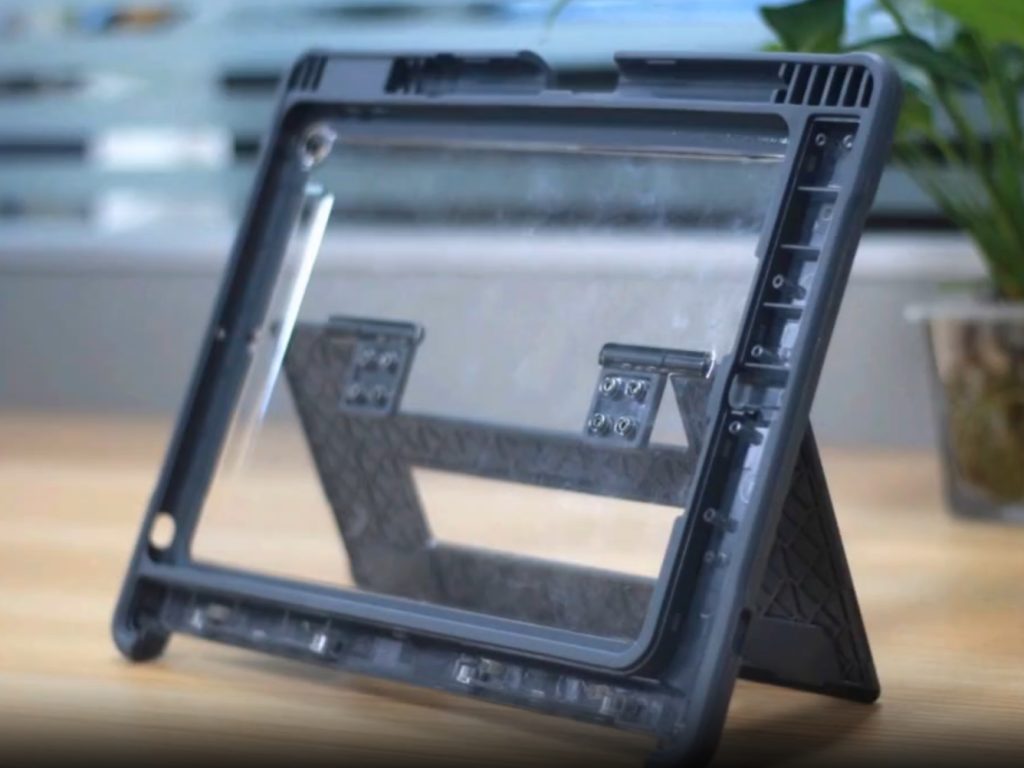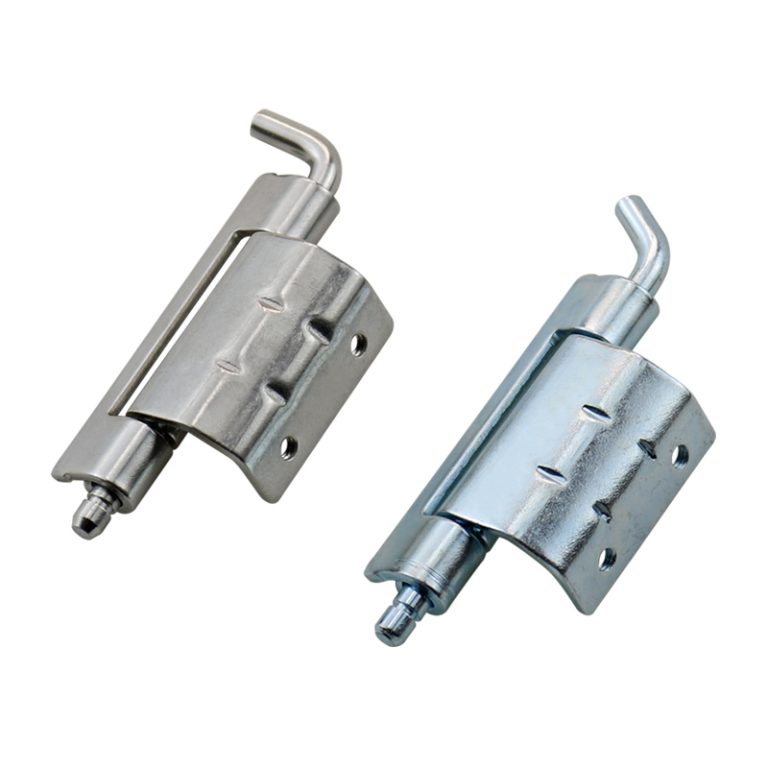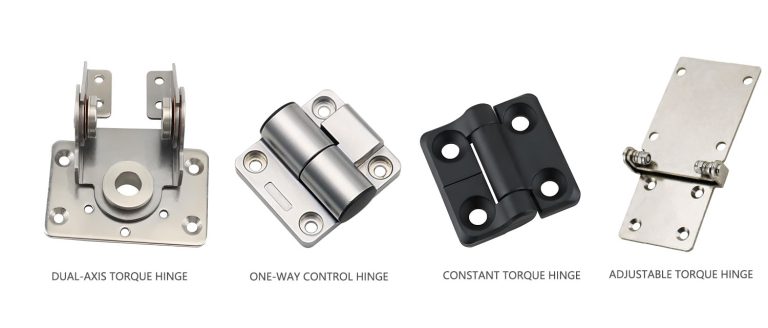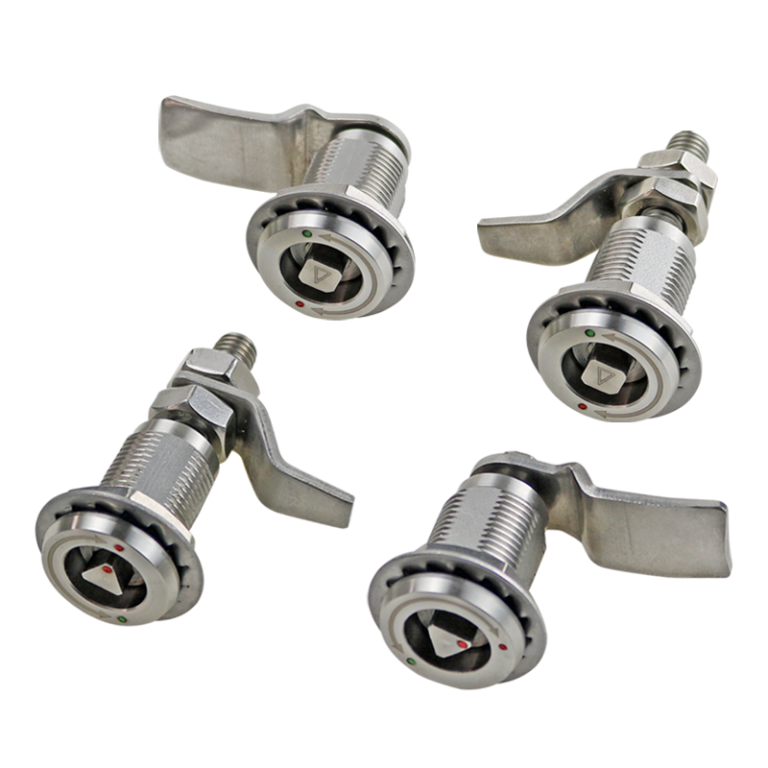HTAN is one of the leading manufacturers of industrial hinges, handles and latches in China.

As a key component connecting the screen and the body, the laptop hinge directly affects the product opening and closing feel, structural strength, and service life. Its customization needs to take into account the assembly space adaptability, rotation angle limit, torsion life index, material technology selection, and other multi-dimensional parameters. In this paper, we start from the core dimensions of structural matching, lightweight and thinning demand, damping tuning, etc., and put forward differentiated process optimization paths for consumer-grade and high-end models, so as to provide full-process technical references for the customization of laptop hinges.
I. Assembly Space Adaptability
1. Structural Matching
Determine the hinge type (such as table chain, butterfly, dual-axis linkage, etc.) according to the overall or local 3D drawings of the notebook to ensure that the hinge size is compatible with the internal space of the fuselage.
2. Thin and Light Demand
- Sinking Hinge: More suitable for ultra-thin design (thickness can be controlled within 2.8mm).
- Protruding Hinge: Suitable for large-screen or full-featured models (need to reserve port space).
II. Rotation Angle and Limit Design
1. Angle Range
Support 0-360° any angle hover. Some scenes need to limit the opening and closing range (such as 180° business book or 360° flip book).

2. Limit Mode
- Hinge Built-in Limit: Through the cam or notch structure inside the hinge to limit the angle.
- Shell Auxiliary Limit: In the notebook AB shell set buckle or block (need to be optimized with the hinge structure).
3. Closing Feel
Self-closing angle is usually set to 30°, need to be adjusted through the damping to achieve a “light touch that is closed” smooth experience.
III. Torque and Life Requirements
1. Torque Calculation
- Basic Formula: According to the screen weight and size estimates (such as 14-inch screen needs 3.5-4.0kqf.cm torque).
- Verification: Need to confirm the final parameters through the physical prototype dynamic testing (opening and closing speed, angle stability).
2. Life Standard
- Consumer-Grade Notebooks: 220,000 times open and close, torque Yuan s15%.
- High-End Business/Gaming Book: 250,000 times, Yuan reduction ≤ 10% (SK7 stainless steel or hardened alloy).
3. Test Method
Use the hinge life testing machine to simulate the actual use (such as ZJ-345 model support 360° cycle test, record the Yuan reduction rate).
IV. Material and Process Selection
1. Core Material
- Stainless Steel (SUS304/SK7): High wear resistance, salt spray test 248H, suitable for high-frequency use of the scene.
- Aluminum Alloy: Preferred lightweight (density 2.7g/cm³), anodized to enhance the hardness.
2. Processing Technology
- MIM (Metal Injection Molding): Suitable for complex structure hinges (accuracy +0.02mm).
- CNC Finishing: Surface roughness precision Ra≤0.8um, to ensure the rotation of the top slip without jamming.
3. Lubrication Program
Pre-coated PTFE grease (coefficient of friction ≤0.05), high-temperature resistance up to 150°C.
V. Environmental Protection and Compliance
- ROHS Certification: Prohibit the use of lead, cadmium, and other hazardous substances, especially for export to the EU market need to provide SGS reports.
- Packaging Requirements: Anti-static bags + EPE slow) in the transportation vibration test in line with ISTA 2A standards.
VI. Suggestions for Manufacturers’ Collaboration
- Fast Sampling: Priority to support 3D drawings 24-hour response to the manufacturer (HTAN).
- Cost Control: Batch orders (≥ 10,000 pieces) can be optimized process (such as stamping instead of CNC), unit price reduction of 30%-50%.
VII. Customized Process Reference
- Demand confirmation → 2. 3D structure design → 3. Material/process selection → 4. Prototype testing (3-5 rounds) → 5. Mass production (15-30 days) (need to reserve 10% redundancy time to deal with design changes)
VIII. FAQ
Q1: How to choose the right hinge structure according to the type of laptop?
A1:
- Ultra-thin notebook (thickness ≤15mm): Priority is given to the sunken hinge, whose axis rear design saves longitudinal space and is suitable for ultra-thin bodies of 2.8mm or less, while avoiding interference with motherboard components.
- Large screen/full-featured notebook (16 inches or more): Recommended protruding hinge, its modular design can be integrated with the interface bracket, and reserve 5-8mm port space.
- 2-in-1 flipbook: Table chain hinge or dual-axis linkage structure is required to achieve 360° rotation through multiple hinge segments, while reserving 5°-7° pre-tensioning angle to disperse the screen stress.
Q2: How to deal with the difference between hinge torque calculation and actual test?
A2:
- Theoretical correction: Add 20%-30% redundancy on the basis of the basic formula (T = screen weight x center of gravity arm length x cosθ) to compensate for assembly tolerance and friction loss.
- Actual test optimization: Dynamic test by ZJ-345 and other life testing machine, record the opening and closing speed (recommended 15°/s), angular stability (deviation ≤±1.5°), and use gradient damping adjustment method to ensure that the torque value decays ≤15% (consumer grade) or ≤10% (high-end models) during the life cycle.
Q3: What is the core difference between stainless steel (SUS304/SK7) and aluminum alloy hinges?
A3:
- Performance Comparison:
- Stainless Steel: Wear resistance is improved by 2 times (salt spray test ≥ 248 hours), suitable for high-frequency opening and closing scenarios (e.g., e-sports books), but the density reaches 7.9g/cm³, and the weight increases by 15-20%.
- Aluminum Alloy: Lightweight advantage is obvious (density 2.7g/cm³), the anodized hardness can reach HV400, but wear resistance is weak, need to cooperate with PTFE grease to reduce the coefficient of friction to below 0.05.
- Cost Difference: SK7 stainless steel hinge unit price is 40%-60% higher than 6061 aluminum alloy, but the life cycle cost is lower.
Conclusion
Laptop hinge customization is a fusion of precision machinery and industrial design innovation, the need to balance structural strength, opening and closing feel and durability in the millimeter space. From material crystal phase optimization to gradient damping tuning, from MIM precision molding to harsh environmental verification, each link tests the depth of technology and industry chain synergy. With the emergence of folding screen, scroll screen and other new forms, the future hinge will evolve in the direction of variable stiffness, embedded sensing and other intelligent direction, promoting manufacturers to build new technical barriers in the field of super-hard coating, digital twin test, etc., and reshaping the physical pivot of human-machine interaction experience.





-768x768.png)

